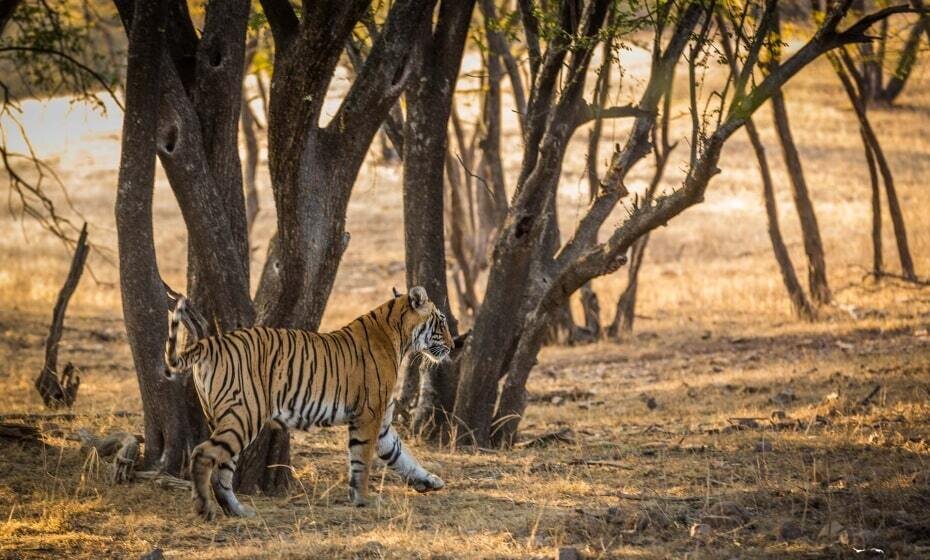Ranthambore National Park, Rajasthan
Discover Ranthambore National Park
Wildlife enthusiasts and photographers will be in heaven at Ranthambore National Park, one of the most famous national parks in Northern India. This amazing sanctuary is home to a multitude of mammals and reptiles, alongside 272 species of resident and migrant birds and almost 300 species of vegetation.
Once the former hunting grounds of Jaipur Maharajas, the park was declared a wildlife sanctuary in 1957, gained the protection of “Project Tiger” (a government initiative to conserve this endangered species) in 1974 and achieved National Park status in 1981.
Ranthambore now supports a relatively healthy population of tigers (many of which have been named by the rangers), and your best chance of spotting one is on a game drive in the park.
The park’s most famous resident is the diurnal tiger, active during the day (unlike most tigers who are nocturnal). It’s one of the best locations in India to visit if you want to spot these magnificent stripy beasts roaming and hunting on a game drive around the park.
Wild animals at Ranthambore National Park
Tigers, leopards, striped hyenas, Sambar deer, Chital, Nilgai, Common or Hanuman langurs, Macaques, Jackals, Jungle cats, Caracals, Sloth bears, Black bucks, Rufoustailed Hare, Indian Wild Boar, Chinkara, Common Palm Civets or Toddy cat, Common Yellow Bats, Desert Cats, Fivestriped Palm Squirels, Indian False Vampires, Indian Flying Foxes, Indian Foxes, Indian Gerbils, Indian Mole Rats, Indian Porcupines, Long-eared Hedgehogs, Ratels, Small Indian Mongoose, Small Indian Civets and Common Mongoose.
Reptiles
Snub Nosed Marsh Crocodiles, Desert Monitor Lizards, Tortoise, Banded Kraits, Cobras, Common Kraits, Ganga Soft Shelled Turtles, Indian Pythons, North Indian Flap Shelled Turtles, Rat Snakes, Russel’s Vipers, Saw-scaled Vipers and the Indian Chamaeleon.
Birds
Graylag Goose, Woodpeckers, Indian Gray Hornbills, Common Kingfishers, Bee Eaters, Cuckoos, Parakeets, Asian Palm Swift, Owl, Nightjars, Pigeon, Dove, Crakes, Snipes, Sandpipers, Gulls, Terns, Great Crested Grebe, Eagles, Darters, Cormorants, Egrets, Herons, Bitterns, Flamingos, Ibis, Pelicans, Storks, Pittas, Shrikes, Treepies, Crows, Orioles, Cuckoo-Shrikes, Minivets, Drongos, Flycatchers, Ioras, Wood Shrikes, Pipits, Bayas, Sparrows, Finches, Wagtails, Munias, Bulbul, Mynas and Falcons.
As well as all creatures great and small, it’s worth a visit to the remains of Ranthambore Fort, to take in panoramic views of the park below.
The best way to see Ranthambore National Park
If you would like to visit Ranthambore National Park, why not take a look at one of our wonderful ATOL and ABTA protected holidays? Please remember all our private tours are designed to meet your exact requirements, and the tours mentioned are just examples to help inspire you. Contact our travel experts on 01792 315499 or email info@aitholidays.com for more information.






